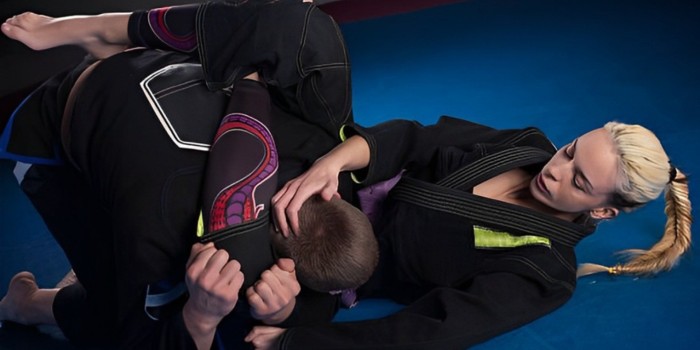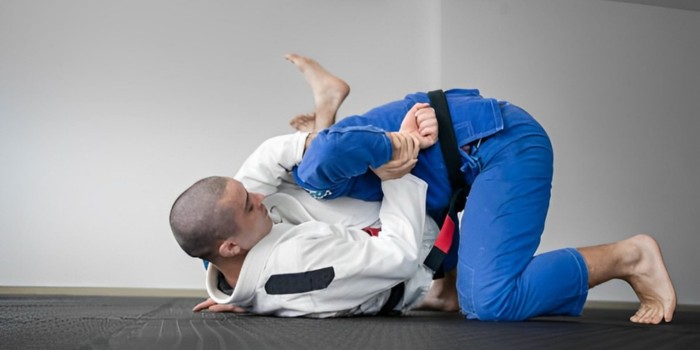In the world of martial arts, few techniques hold the mystique and effectiveness of the Ninja Choke. This submission maneuver, originating from ancient martial arts traditions, has found its way into modern combat sports like Brazilian Jiu-Jitsu (BJJ) and Mixed Martial Arts (MMA), where its potency as a fight-ending technique is revered. In this comprehensive guide, we delve into the intricacies of the Ninja mma Choke, exploring its origins, variations, techniques, and applications in combat sports.
What is the Ninja Choke?
It’s, also known as the “blood choke,” is a grappling technique designed to restrict blood flow to the brain by compressing the carotid arteries. Its origins can be traced back to the ancient martial arts practices of ninjutsu and jujutsu, where it was employed by stealthy warriors for incapacitating opponents silently. Unlike other chokeholds that target the windpipe, This Bjj Choke operates by cutting off blood circulation, rendering the opponent unconscious within seconds. To execute a successful Ninja Choke bjj, one must master the precise positioning, grip placement, and leverage required to apply optimal pressure on the carotid arteries while minimizing the risk of injury.

Variations of the Ninja Techniques:
The Ninja Bjj Choke boasts several variations, each with its own set of nuances and applications. Among the most prominent are the Anaconda Choke, D’arce Choke, and the Guillotine Choke.
Anaconda Choke:
The Anaconda Choke involves wrapping one arm around the opponent’s neck and the other under their armpit, creating a tight grip that constricts both carotid arteries.
Credit: Jordan Teaches Jiujitsu
D'arce Choke:
The D’arce Choke, also known as the “Brabo Choke,” is executed by threading one arm through the opponent’s neck and clasping the bicep of the other arm, creating a powerful chokehold from a variety of positions
Credit: Jordan Teaches Jiujitsu
Guillotine Choke:
Lastly, the Guillotine Choke entails trapping the opponent’s head under the arm and applying pressure to the throat, making it a versatile technique from both standing and ground positions.
Credit: Knight Jiu-Jitsu
Techniques for Executing the Ninja Choke:
To execute this choke technique effectively, practitioners must adhere to specific techniques and principles. Proper positioning is paramount, with the attacker seeking to control their opponent’s posture and secure a dominant position from which to apply the choke. Grip placement plays a crucial role, with variations in hand positioning dictating the angle and pressure of the choke. Leveraging body weight and leverage is essential for maximizing the effectiveness of the chokehold while minimizing energy expenditure. Both attackers and defenders must understand the mechanics of the Bjj Ninja to execute or escape the technique safely and efficiently.
Applications in Combat Sports:
This Choke has become a staple technique in various combat sports, including Brazilian Jiu-Jitsu and MMA, where its efficacy as a submission maneuver is widely recognized. Athletes adept at applying this Choke can quickly turn the tide of a match, securing victory with a well-timed chokehold. Real-world examples abound, with renowned fighters like Marcelo Garcia and Georges St-Pierre showcasing the technique’s effectiveness in high-stakes competition. Strategic considerations, such as timing, positioning, and opponent tendencies, play a crucial role in successfully implementing the Ninja submission in a competitive setting.
Training and Drilling:
Training the Ninja submission technique requires a systematic approach that emphasizes repetition, technique refinement, and safety. Practitioners should dedicate ample time to drilling the mechanics of the chokehold from various positions and scenarios, gradually increasing the intensity as proficiency improves. Partner drills and live sparring sessions provide invaluable opportunities to test and refine the technique under realistic conditions. Emphasis should be placed on proper supervision and adherence to safety protocols to mitigate the risk of injury during training.

Historical and Cultural Significance:
The Ninja Choke’s historical roots can be traced back to the clandestine tactics employed by ancient Japanese ninjas and warriors. Its evolution from traditional martial arts to modern combat sports reflects the enduring legacy of these ancient techniques. Beyond its practical applications, this holds cultural significance, symbolizing the strategic prowess and adaptability of martial artists throughout history. Philosophical principles such as discipline, patience, and mindfulness are embodied in the practice and mastery of this Choke, reinforcing its status as more than just a physical technique.
Conclusion:
In conclusion, the Ninja Choke stands as a testament to the ingenuity and effectiveness of martial arts techniques passed down through generations. From its humble origins in ancient warfare to its prominence in contemporary combat sports, the Ninja technique continues to captivate and inspire practitioners worldwide. By mastering the techniques, variations, and strategic applications of the Ninja submission martial artists can enhance their skills and unlock new avenues for success in their chosen discipline.
Frequently Asked Question's (FAQ's):
Q: What is the difference between Darce and Ninja choke?
These are both effective grappling techniques used in combat sports, but they differ in their execution and mechanics. The Darce choke involves trapping one of the opponent’s arms with your own arm, while the Ninja submission typically employs both arms to encircle the opponent’s neck. Additionally, the Darce choke is often applied from positions like side control or top half guard, whereas the Ninja techniques can be executed from various positions including closed guard, standing, or bottom side control.
Q: Is Ninja choke the same as guillotine?
These choke are submission techniques that target the opponent’s neck, they are executed differently and have distinct mechanics. The Ninja bjj submission involves wrapping both arms around the opponent’s neck to apply pressure to the carotid arteries, cutting off blood flow to the brain. In contrast, the guillotine choke typically involves trapping the opponent’s head under one arm and applying pressure to the throat with the forearm or hand. Despite some similarities, these chokes are distinct techniques with different setups and execution methods.
Q: What is a cobra choke?
A cobra choke is another type of submission hold commonly used in grappling and martial arts. This choke involves wrapping one arm around the opponent’s neck and applying pressure to the carotid arteries, similar to the Ninja. However, what sets the cobra choke apart is the positioning of the other arm, which is typically used to control the opponent’s body or posture to enhance the effectiveness of the choke. Like the Ninja submission, the cobra choke can be executed from various positions and is valued for its ability to quickly render the opponent unconscious when applied correctly.


